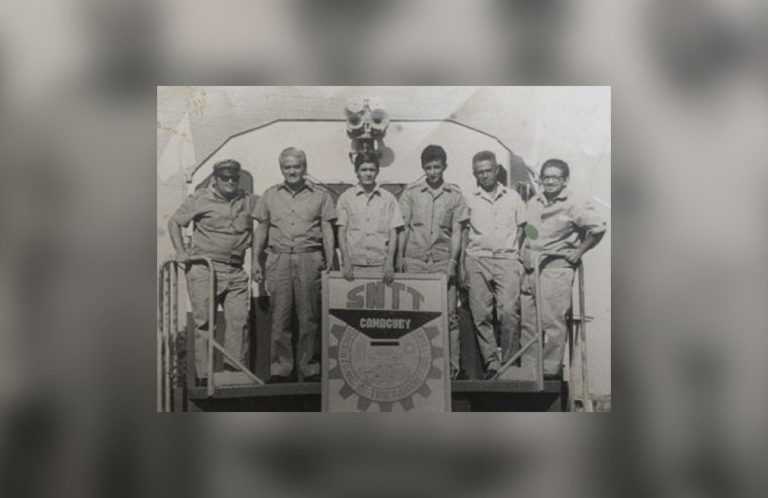One of the largest works in the 70s of the last century was undoubtedly the reconstruction of the Central Line of Railroads of Cuba. The ceremony for the execution of the first section was held on January 29th, 1975, when Commander Fidel Castro operated the Soviet locomotive M62-K, and since then this date has been established as the Day of the Cuban Railway Worker.
The two drivers who accompanied the Commander in that adventure were from Camagüey from a special squad, together they traveled 25 kilometers of the Central Line, from Oliver to Placetas.
The crew
The people from Camagüey selected to form up this brigade had a high level of knowledge and expertise, which is why they participated in various important events nationwide. It was made up of the engine drivers: Antonio Sánchez Ruiz and Jesús Varona Atiénzar, the driver’s assistants: Urbino Rodríguez Nordelo and Juan Lobaco Días and Heriberto Tobar Sánchez, as the driver.
The engine driver
Jesús Varona Atiénzar worked for 50 years on the railroad, his railway inheritance from his father side transformed him into an eternal passionate about the railroad, it is said that railway lines run through his veins.
Today he reveals several encounters with Fidel, almost all in the cabin of the locomotive in charge of a vanguard train, as those special events were called, throughout the island.
The first was that of 1975, in the Russian M62-K machine, he had the pleasure of guiding the controls and showing him what to do, so that Fidel could drive about 5 km of the route, he remembers with pleasure that he asked many questions, he wanted to know everything related to the track.
When he said goodbye, he told them that he entrusted to young people like them that challenge, in order to recover the railroad and bring it to the levels necessary to develop cargo and passenger transportation.
Other encounters
The vanguard crew once again drove in the transportation to the capital, for the First Congress of the PCC and for the Fourth Congress in Santiago de Cuba.
In those meetings, he remembers him as very simple and talkative, eager to know technical details and always very respectful of the word of the specialists.
Chinese locomotives
The machines from Asia were the last that Fidel received in person, in the port of Havana, they did not drive there, they only checked them; and Varona proudly remembers that he was called to the booth, to explain to the leader of the Cuban Revolution if the possibility of lighting an entire neighborhood, with the locomotive’s generator, was real, to which he answered no, it was a small generator like that of any cargo vehicle, not for such an ambitious purpose.
That was the last time he was with his crew so close to Fidel, but he remebers the pleasant meetings with affection, because for them he was always very aware of the development of this means of transport, so necessary for the country’s economy.
Memories
After dusting off such pleasant railway memories, in which Fidel Castro was present, the engineer regrets that today he is the only one who lives to tell the story, since he was the young man of that group and his companions have already died.
He treasures some photos of his crew, but none of those historical moments, as cameras were quite rare then.
However, Jesus has the satisfaction of what he experienced and of knowing that the Soviet machine 61602, which in its premiere gave rise to the day of the Cuban railway, is still preserved in the museum of Havana and in its cabin the imprint of that unforgettable meeting prevails.
Translated by: Aileen Álvarez García






